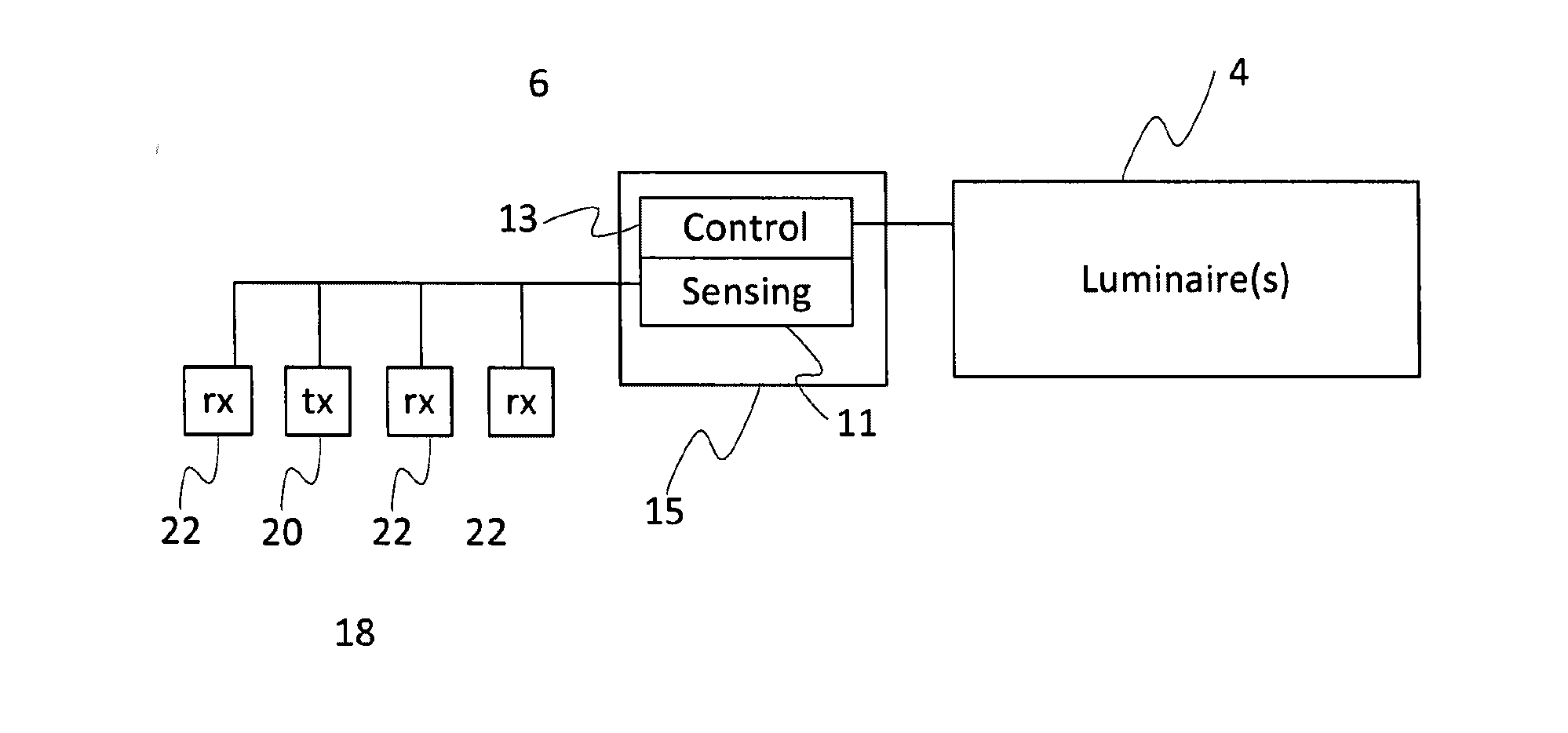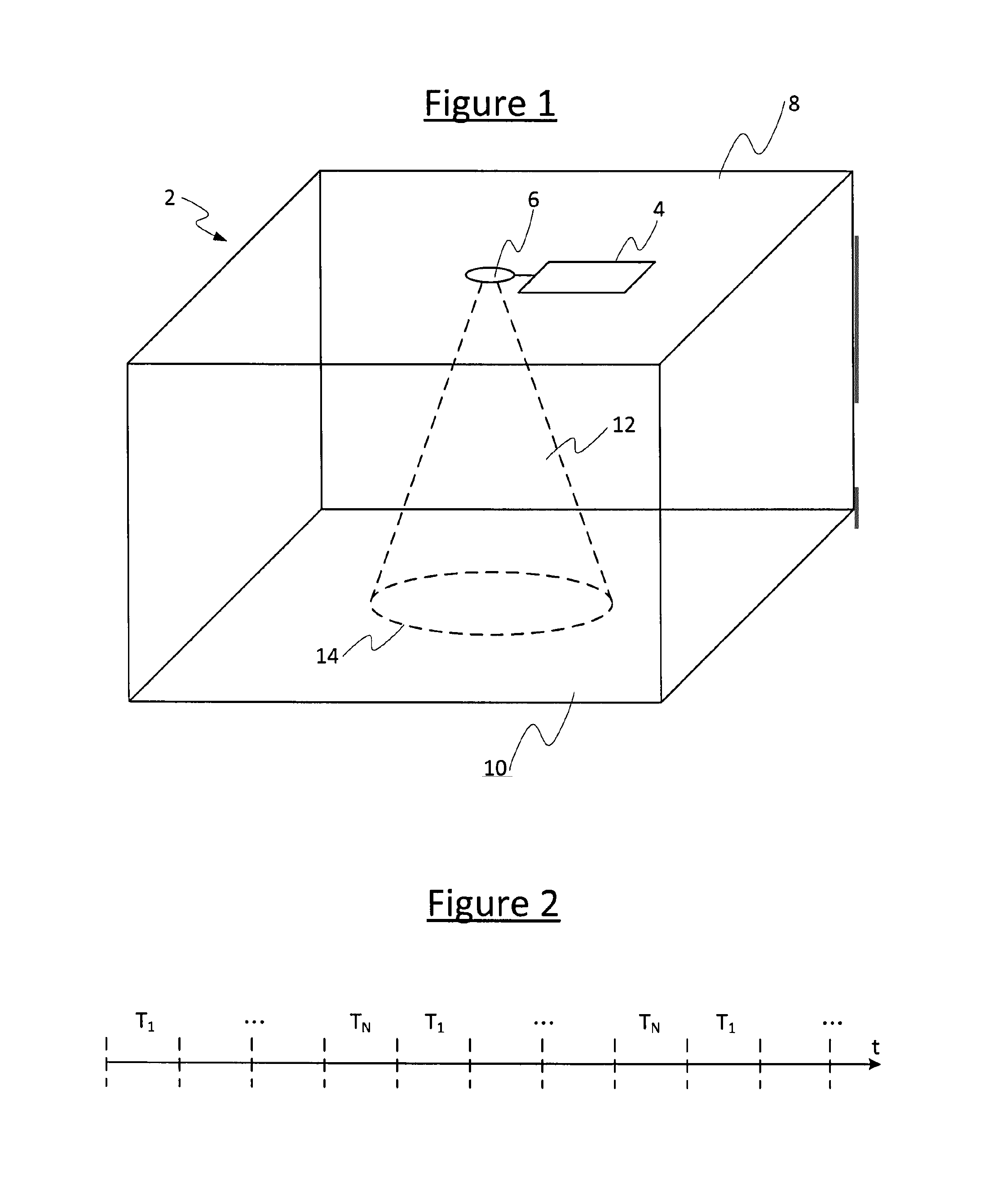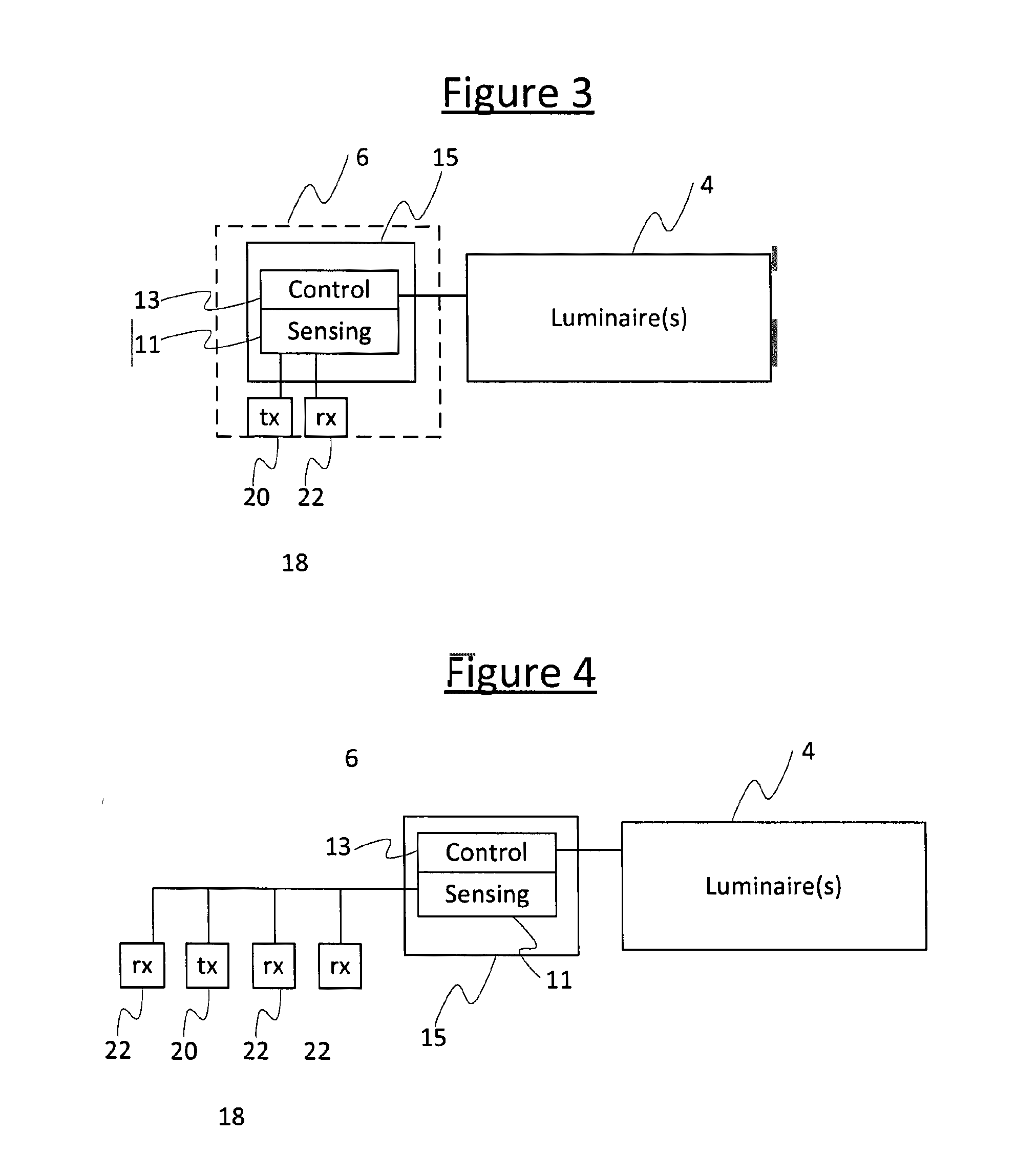Mitigating disturbance in sensing
a sensing and disturbance technology, applied in the field of sensing, can solve the problem that the active sensor cannot be conventionally detected, and achieve the effect of reducing false triggers and sensing sensitivity
- Summary
- Abstract
- Description
- Claims
- Application Information
AI Technical Summary
Benefits of technology
Problems solved by technology
Method used
Image
Examples
Embodiment Construction
[0022]FIG. 1 illustrates an example of an environment in which embodiments disclosed herein may be employed.
[0023]The environment comprises an indoor or outdoor space 2 such as an office space, an interior space within a home, a laboratory, a marquee, garden or park, etc. The space 2 comprises a sensor 6 mounted or otherwise disposed at a location enabling it to sense a being in the space 2 or a desired region 12 within the space. In the illustrative example, the sensor 6 is mounted on the ceiling 8 of the office 2 so as to sense presence of someone walking on the floor 10. In this case the sensing region 12 may correspond to a certain area 14 on the floor 10.
[0024]As shown schematically in FIG. 3, the sensor 6 comprises a signal processing module 15, and an ultrasound transceiver 18 comprising an ultrasound transmitter 20 and an ultrasound receiver 22 coupled to the signal processing module 15. The signal processing module 15 may be implemented in code (software) stored on a memory...
PUM
 Login to View More
Login to View More Abstract
Description
Claims
Application Information
 Login to View More
Login to View More - R&D
- Intellectual Property
- Life Sciences
- Materials
- Tech Scout
- Unparalleled Data Quality
- Higher Quality Content
- 60% Fewer Hallucinations
Browse by: Latest US Patents, China's latest patents, Technical Efficacy Thesaurus, Application Domain, Technology Topic, Popular Technical Reports.
© 2025 PatSnap. All rights reserved.Legal|Privacy policy|Modern Slavery Act Transparency Statement|Sitemap|About US| Contact US: help@patsnap.com



